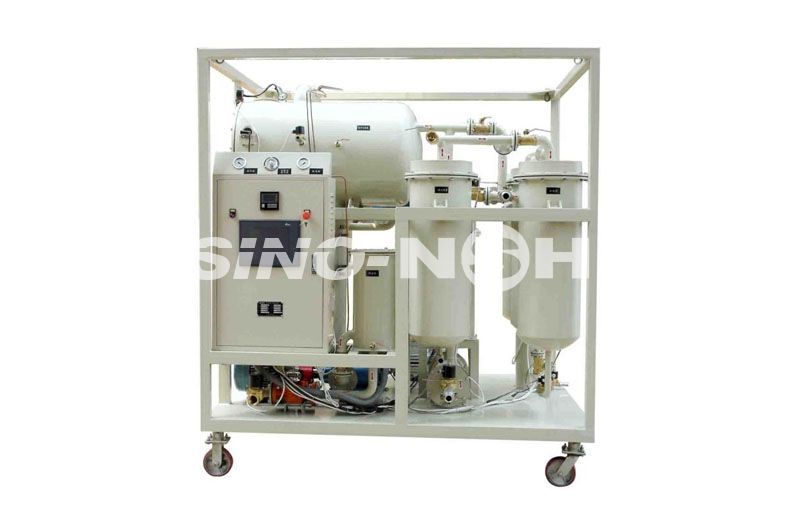E-mail seo@sino-purification.com

Time:2025-10-24 13:25:01 Reading volume:
Transformer oil regeneration equipment plays a vital role in restoring aged insulating oil, improving dielectric strength, and extending transformer life. Based on working principles and regeneration depth, transformer oil regeneration systems can be classified into four main categories.

Core Principle:
Built on a vacuum oil purifier, this system adds adsorption technology to treat slightly aged oil (low acid value, minor oxidation).
Process:
After vacuum dehydration and degassing, the oil passes through adsorption tanks filled with silica gel or activated alumina, which selectively adsorb acids, colloids, and polar impurities.
Features:
✅ Advantages: Simple operation, retains oil additives, low cost.
⚠️ Limitations: Limited effect on heavily aged oil; adsorbent needs regular replacement.
Best for: Routine maintenance and mild oil aging in substations and power plants.
Core Principle:
Also known as clay regeneration, this is the most mature and widely used method, suitable for moderate to severe oil aging.
Process:
Under heating and vacuum, activated clay is added to aged oil and mixed. The clay adsorbs acids, sludge, and pigments. Precision filtration then separates the spent clay from the purified oil.
Features:
✅ Advantages: Excellent results; restores color, reduces acid value, and dielectric loss.
⚠️ Limitations: Generates waste clay requiring disposal; relatively high investment and maintenance.
Best for: Transformer overhaul and large-scale regeneration projects.
Core Principle:
This advanced regeneration system achieves deep oil recovery using molecular sieve technology under high temperature and vacuum.
Process:
Oil passes through molecular sieves that remove moisture, gases, and acidic compounds. Some advanced units can even catalytically break down large aging molecules.
Features:
✅ Advantages: Deep regeneration close to new oil quality; high automation; eco-friendly (no waste clay).
⚠️ Limitations: High cost, energy-intensive, requires skilled operation.
Best for: Ultra-high-voltage transformers and central oil purification stations.
Modern systems often integrate multiple technologies—vacuum dehydration, adsorption, clay contact, and fine filtration—forming a complete multi-stage regeneration process:
Typical Process:
Pre-filtration → Heating → Vacuum dehydration → Clay/adsorbent contact → Precision filtration → Final purification
Features:
Comprehensive performance, adjustable intensity, and capable of handling oil from light filtration to deep regeneration within a single unit.
Degree of Oil Degradation
Mild: Vacuum oil filter + adsorption tank
Moderate/Severe: Clay or molecular sieve regeneration unit
Processing Capacity
Choose units matching transformer oil volume (e.g., 6000 L/h or 12000 L/h).
Regeneration Goal
Determine whether to restore oil to operational or near-new quality.
Budget & Environmental Factors
Balance investment, energy use, and waste disposal (especially for clay systems).
Summary
Transformer oil regeneration systems—whether adsorption-based, chemical, or thermal—are essential for extending transformer life and ensuring insulation reliability. Selecting the right system depends on oil condition, performance goals, and budget.
With the growing focus on green, efficient maintenance, advanced regeneration units are becoming indispensable tools for modern power utilities.